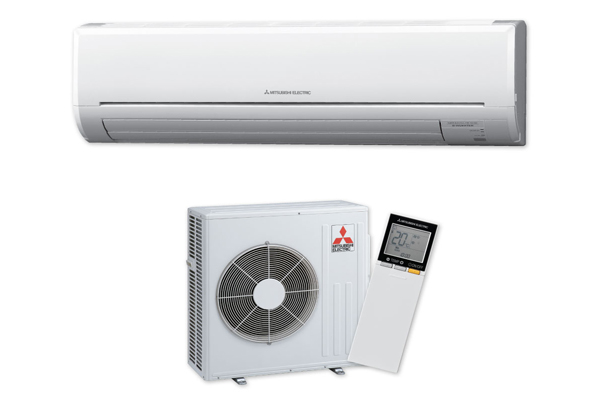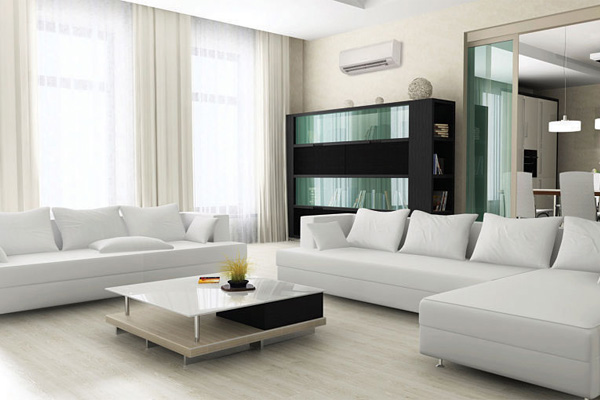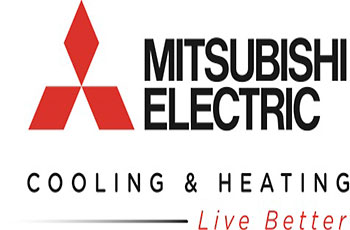Exploring The Wall-Mounted Ductless System

Ductless mini-splits are available in many styles, designs, and sizes. A few types include floor-mounted, ceiling cassette, ceiling suspended, and more. There are also wall-mounted ductless units. This type is the most commonly used mini-split because not only is it the easiest to install. It is also budget-friendly compared to its mini-split counterparts. This indoor mini-split is suitable for most types of spaces as well.
What Is A Wall-Mounted Ductless Unit?
Contents
- What Is A Wall-Mounted Ductless Unit?
- Call R.F. Ohl To Learn More About Ductless Heating & Cooling Systems
A wall-mounted ductless system works like other heating and cooling systems do. It consists of two parts: an outdoor unit and an indoor air handler. The former is placed outside your home and contains the compressor, condenser coils, and vent fan. On the other hand, the indoor unit houses the blower and evaporator coils and is placed inside your home. A conduit that is passed through a three-inch hole in the wall connects the two parts of a wall-mounted unit.
The indoor air handler is mounted high on a wall in the zone you want to heat or cool. A single unit pumps conditioned air directly into the area. Depending on various aspects, it can usually cool or heat one room. It comes in different designs to match your preferences. Some are styled with a low profile, while others can be hidden behind a picture frame.
Wall-Mounted Ductless System Features
Wall-mounted units have many features that ensure homeowners receive energy-efficiency, comfort, control, and optimum performance. Some of the vital features this type of mini-split has includes:
Advanced Air Filtration
Wall-mounted units have multi-stage filtration systems in place. This filter prevents dust, dirt, allergens, and other contaminants from being distributed throughout your house. The filter is also washable for easy cleaning. With this filtration system in place, you can rest assured that you get optimum indoor air quality in your home.
Remote Control
Wall-mounted mini-splits typically come with handheld remote controls. Some units can be controlled through an app installed on your smartphone or tablet. Choose which one will best fit your preferences and lifestyle. For instance, if you are out of your house most of the time, a unit controlled via an app would be best. You can manage your unit from anywhere, and it ensures that you never have to come home to a scorching hot home again.

Sophisticated Design
Wall-mounted systems come in a sleek and compact design. The housing unit is equipped with an elegant front panel that you can get painted or wrapped by a professional so that it’ll match the aesthetic you are going for. The systems also go through rigorous durability testing. This way, you are sure that the systems are durable as well as stylish.
Comfort Control
Every indoor air handler is also equipped with return air sensors that allow the system to track the room’s conditions. This way, the system can adjust its settings, so the temperature is maintained at a comfortable level at all times. Some wall-mounted units have infrared technology that scans rooms for human heat signatures. It will then adjust its settings based on whether there are people in the room or not.
The Advantages & Disadvantages Of A Wall-Mounted Ductless Unit
Here is a list of the various pros and cons a wall-mounted unit has to help you determine if a wall-mounted HVAC system is the right one for you.
Pros
A few of the advantages of a wall-mounted unit are:
- Easy Installation: Wall-mounted systems have a less invasive installation process as it does not require ductwork. Depending on how many indoor units are to be installed in your home, installing a ductless wall-mounted system usually lasts for a couple of hours.
- Energy-Efficiency: Wall-mounted systems are one of the most energy-efficient cooling and heating options you have. It is a cost-effective and environmentally-friendly system that is equipped with advanced technology. This way, you ensure that you receive optimum comfort without burning a hole through your wallet.
- Versatile Application: This type of system does not need ducts to operate. Wall-mounted units are, therefore, suitable for any kind of space, such as condominiums, offices, single-family homes, and apartments, to name a few.
- Better Indoor Air Quality: Dust, dirt, and other particulates are known to accumulate in ducts of traditional HVAC systems. A wall-mounted system does not require ductwork. Therefore, there is no risk of dirty ductwork circulating these contaminants throughout your home. Wall-mounted units also have air filters in place to ensure that you have high indoor air quality at home.
Cons
A wall-mounted system, like any other machine, also comes with a few disadvantages. These include:
- Initial Expense: A wall-mounted mini-split has a higher upfront cost than a window A/C. The price is also higher when you have a large space that needs more units. This is because there are multiple zones, and each zone needs its own indoor air handler. Although you’ll be spending more at the start, a wall-mounted system can save you more in the long run.
- Tricky Placement: The indoor air handler of a wall-mounted system must be correctly placed. Otherwise, the unit might not perform as well as it should. For example, if it is placed in a section that receives direct sunlight, then its sensors won’t be able to read the room temperature accurately. Consequently, the system won’t be able to adjust the temperatures properly for optimum thermal comfort. A local HVAC technician should be able to assist you in finding the best corner to place your wall-mounted unit.
- Aesthetic Appeal: If you are a homeowner that highly values home aesthetics, then a wall-mounted system might not be for you. This is because the indoor air handlers of a wall-mounted system are visible in the room, and some homeowners find it obtrusive.
Choosing A Wall-Mounted Ductless System
A wall-mounted ductless system is suited for spaces that have ceilings that are at least seven to eight feet high. The indoor units should be placed at least six feet high on the wall. This way, it can perform at optimum capacity and distribute conditioned air evenly throughout the room. A wall-mounted system is usually mounted in small offices or bedrooms, dining rooms, and living rooms. A wall-mounted system is not recommended for places that have low or slanted ceilings like your attic. A floor-mounted system might be better suited as it can cool or heat these spaces better than a wall-mounted one.
Multiple indoor units are also required if you want a wall-mounted system in a larger room. This is to ensure that you receive the thermal comfort you want. A single indoor unit might not be enough to heat or cool a larger room, and you might experience hot or cold spots. If you prefer only to have one unit, however, you can choose a different type that offers more coverage, such as a ceiling cassette or a ceiling suspended unit.
Wall-Mounted Mini-Split Installation

Before you go out and purchase a wall-mounted system, make sure to look into the wall depth specifications. You might have a wall that is too thick for some units to fit. After all, different makes and models require different wall depth sizes.
Wall-mounted systems also have lightweight wall brackets that need to be correctly attached to the wall. It is where the unit is hung. Ensure that the brackets are secured and that the unit is mounted horizontally. Keep in mind that a unit that is mounted vertically or diagonally can’t operate properly.
For easy installation and drainage, make sure that the mini-split system is installed on an exterior wall. This is because you can run the line set, connecting wire, and drain tubing that is in the outdoor unit directly to the indoor unit through a three-inch hole. This way, you also won’t need to install a drain pump as gravity will help you drain out the condensate instead. However, if installing it on an exterior wall isn’t an option, then you have to install a condensate pump.
You also have to make sure that the indoor unit isn’t next to a television, microwave, or any other device that has electromagnetic interference. Otherwise, it might disrupt the communication between the unit and remote control. Make sure to keep the indoor unit away from direct sunlight and other heat sources. This can influence the temperature reading of your unit and, in turn, the output of your wall-mounted system.
Check Out One Of Our Ductless Installation Projects
Ductless Panels Add Heat And AC In An Addition To A Catasauqua PA Home
Conclusion
Finding the right wall-mounted system for your home can present a challenge. A professional technician can help you choose which wall-mounted ductless system can fit your home comfort needs, efficiency expectations, and aesthetic. They have extensive knowledge and years of experience to ensure that you have the make and model that is within your budget.
Call R.F. Ohl To Learn More About Ductless Heating & Cooling Systems

If you want to discover what a ductless HVAC system can do for you, call R.F. Ohl. Our NATE-certified technicians will help you determine the type of HVAC system that works best for your needs.
R.F. Ohl is one of the region’s leading full-service HVAC companies. We offer a wide range of HVAC services, from installations and tune-ups to repairs and consultations. We can help you find different approaches and solutions to ensure that our services meet your requirements and budget. Call us today for a free, in-home estimate.
Click here to contact us today or give us a call at (610) 377-1098 if you have any questions.